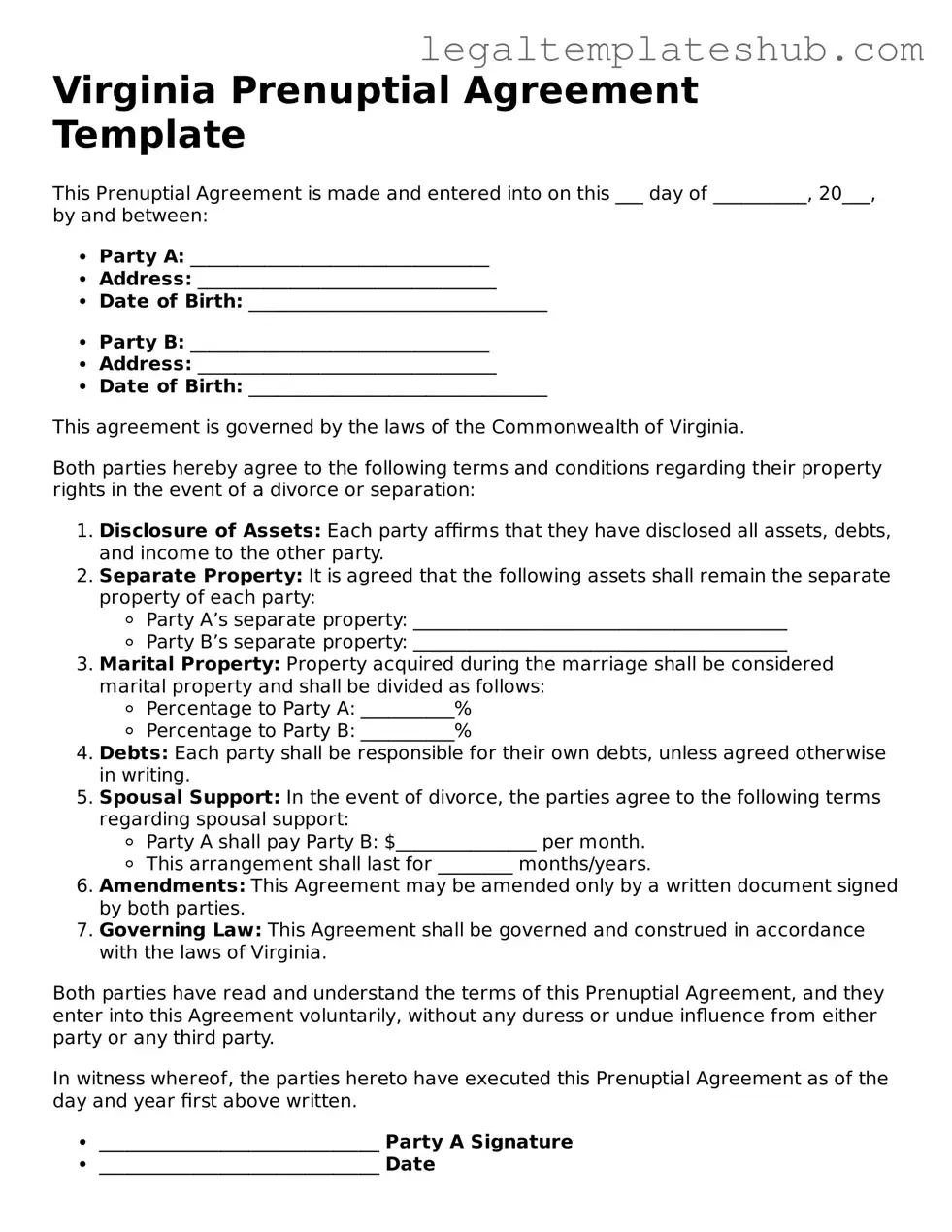Printable Prenuptial Agreement Document for Virginia
A Virginia Prenuptial Agreement form is a legal document that outlines the financial and property rights of each spouse in the event of divorce or separation. This agreement helps couples clarify their expectations and protect their assets before entering into marriage. For those considering this important step, filling out the form can provide peace of mind—click the button below to get started.
Access Editor
